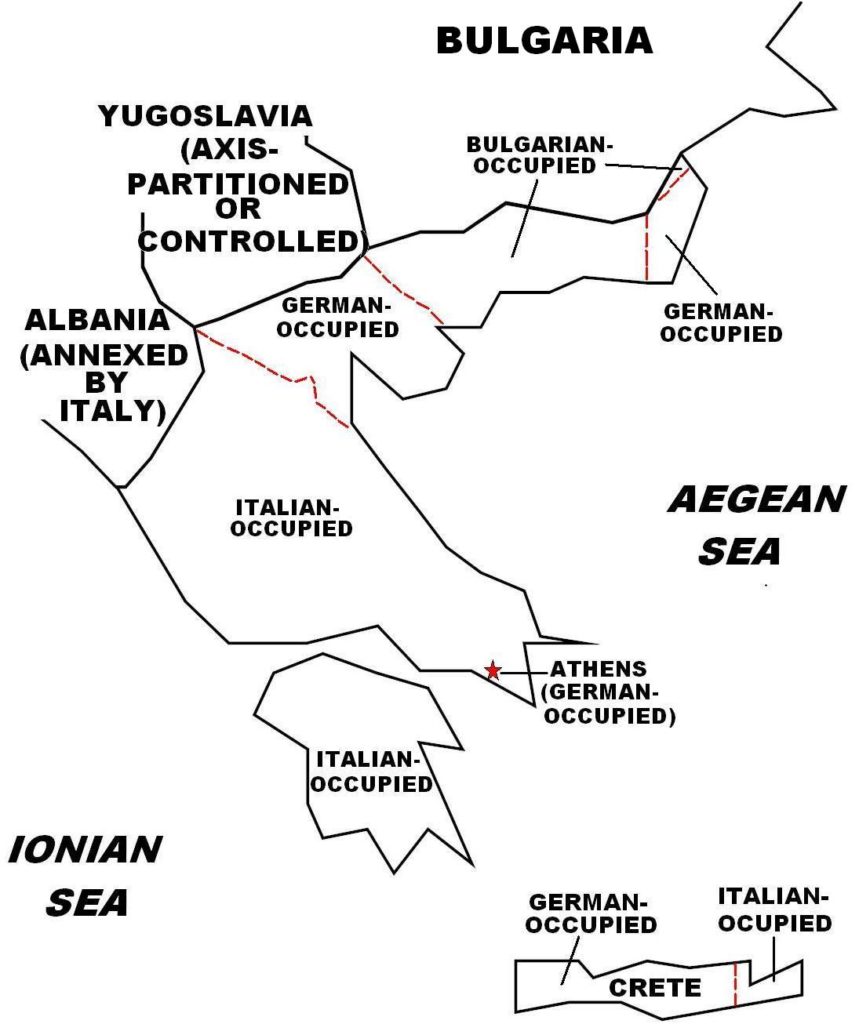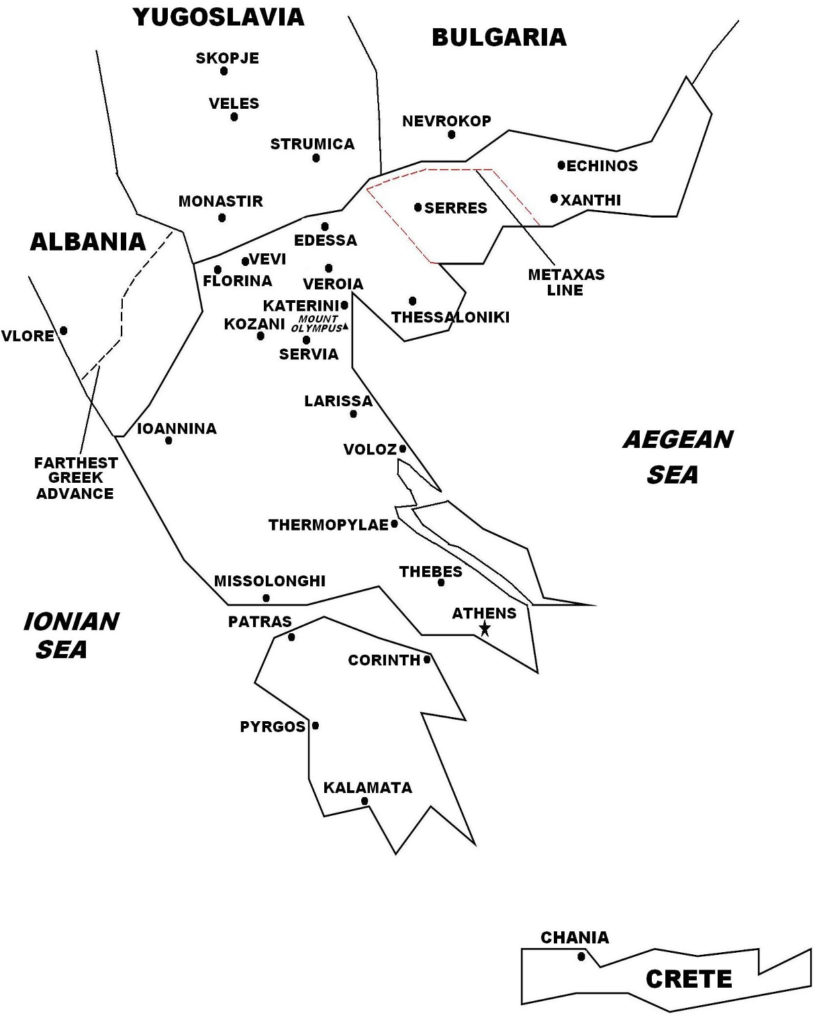On May 20, 1941, German paratroopers landed on Crete, Greece’s largest island on the south. In early June 1941, the Axis conquest of all Greek territories was completed by the German capture of Crete after a two-week offensive. The Battle of Crete involved German paratroopers and glider units seizing strategic points in the northern coast preparatory to the arrival of other ground forces. The initial German landings brought near disaster, as the paratroopers suffered heavy casualties and the Luftwaffe lost a significant number of planes. But with the capture of Maleme airfield following an Allied communications error, the Germans established a toehold in Crete for more troops to arrive. On June 1, 1941, the Germans seized the whole island; some 18,000 Allied soldiers who had failed to be evacuated were captured.

In the aftermath of the Axis campaign, Greece was divided into Axis occupation zones, with Germany taking the most strategically important regions, including Athens, and the Italians occupying much of the rest of Greece. Bulgaria, which did not participate in the invasion, was allowed to occupy Western Thrace and Eastern Macedonia. In Athens, the Germans set up a collaborationist government under the renamed “Hellenic State”, which held no real power but served merely as a conduit for German impositions.
Background On April 6, 1941, Germany launched Operation Marita, the invasion of Greece, with the German 12th Army in Bulgaria launching offensives into southern Yugoslavia, whose capture would achieve the strategic objective of cutting off the rest of Yugoslavia in the north with Greece in the south. By the second week, the Germans had captured nearly the whole Greek mainland. Over the course of five nights starting on April 24, 1941, the British Royal Navy and other Allied ships evacuated 55,000 British and Dominion troops to Crete and Egypt. The British also left behind most of their weapons and military equipment, including trucks, tanks, and planes. For more information on this war, click here.

